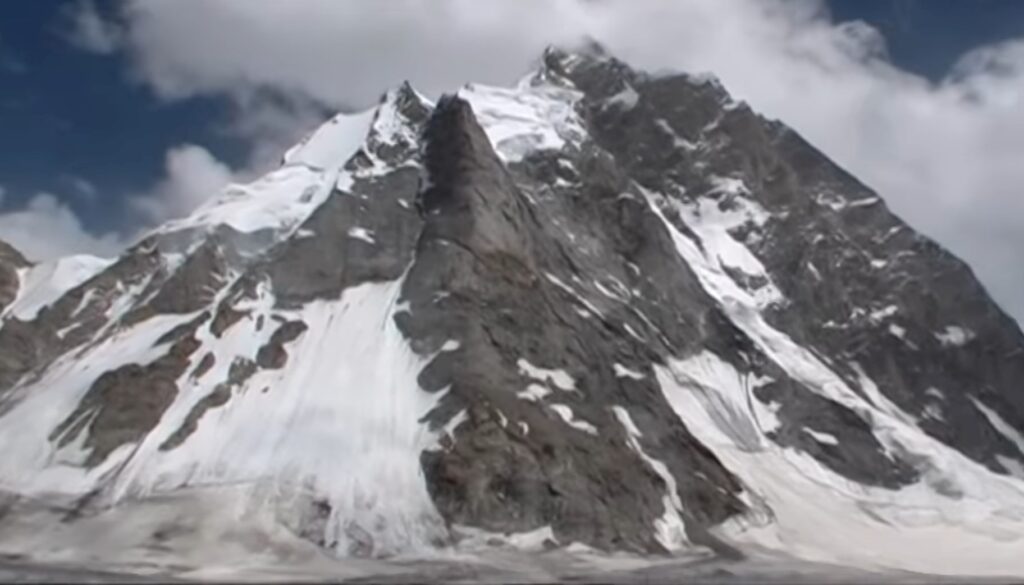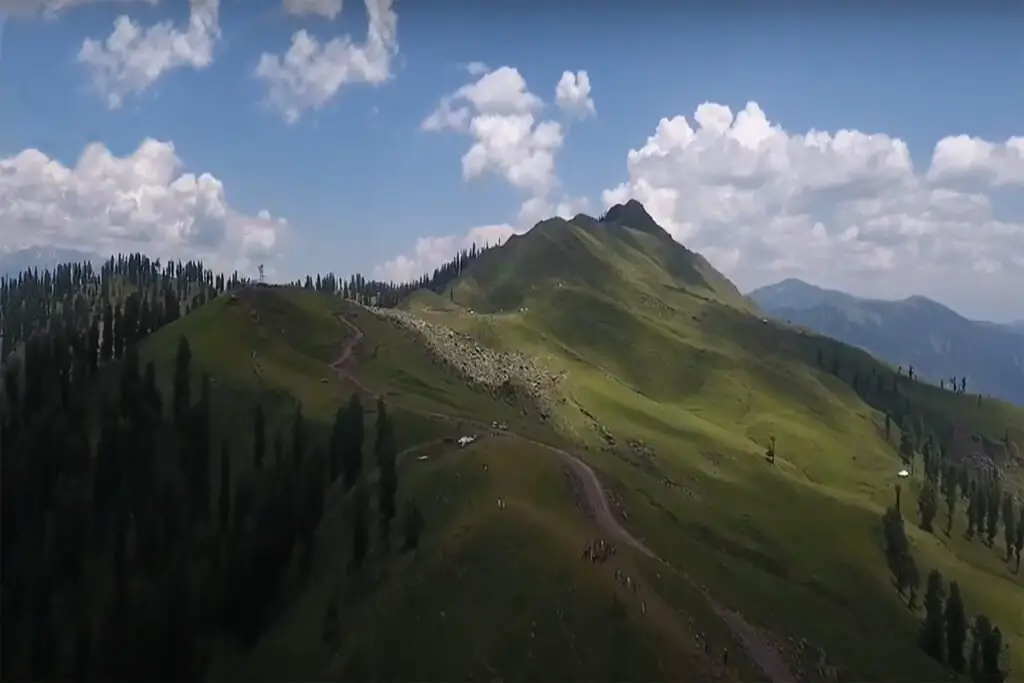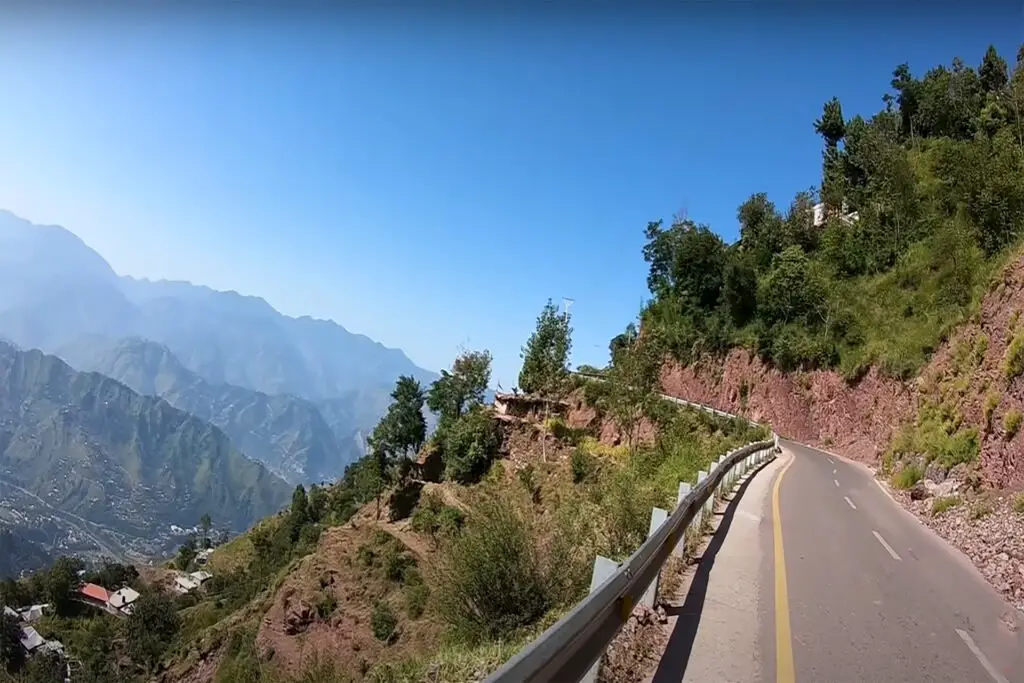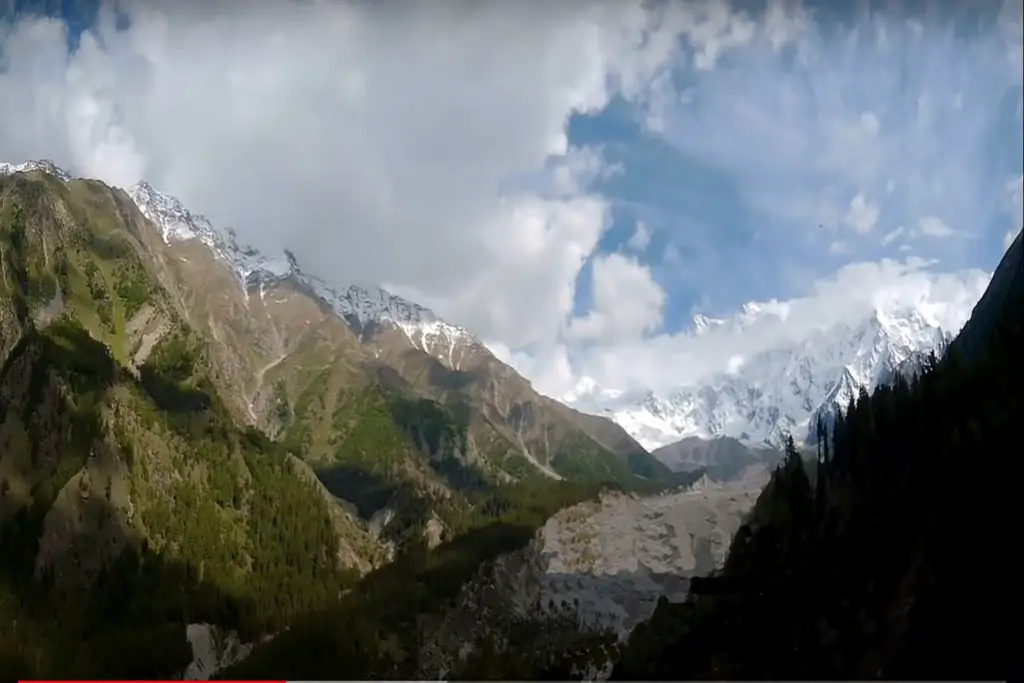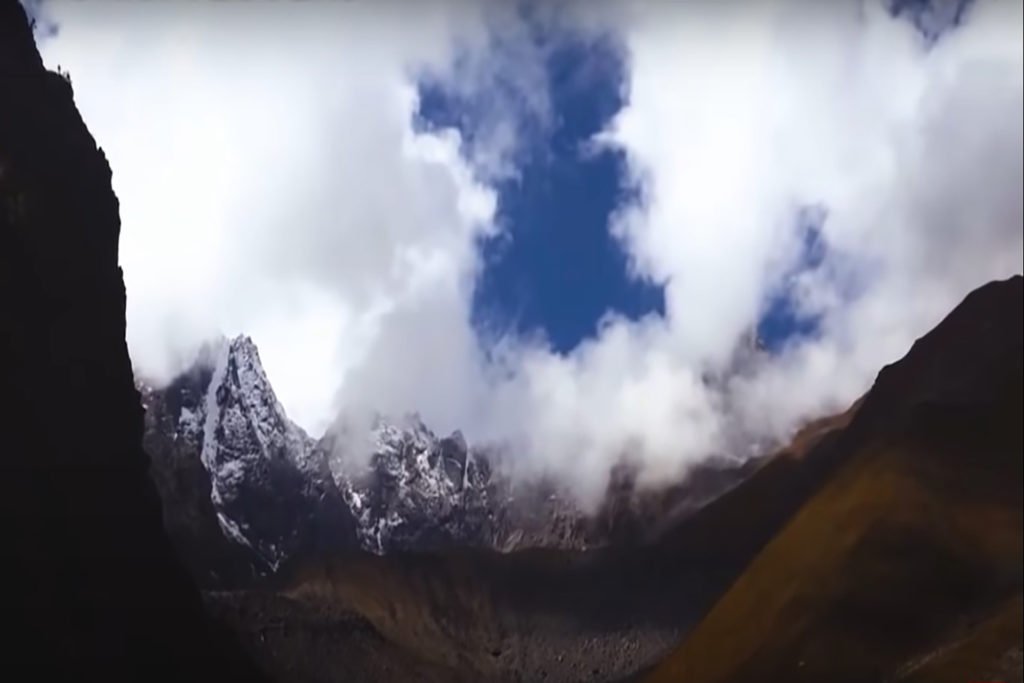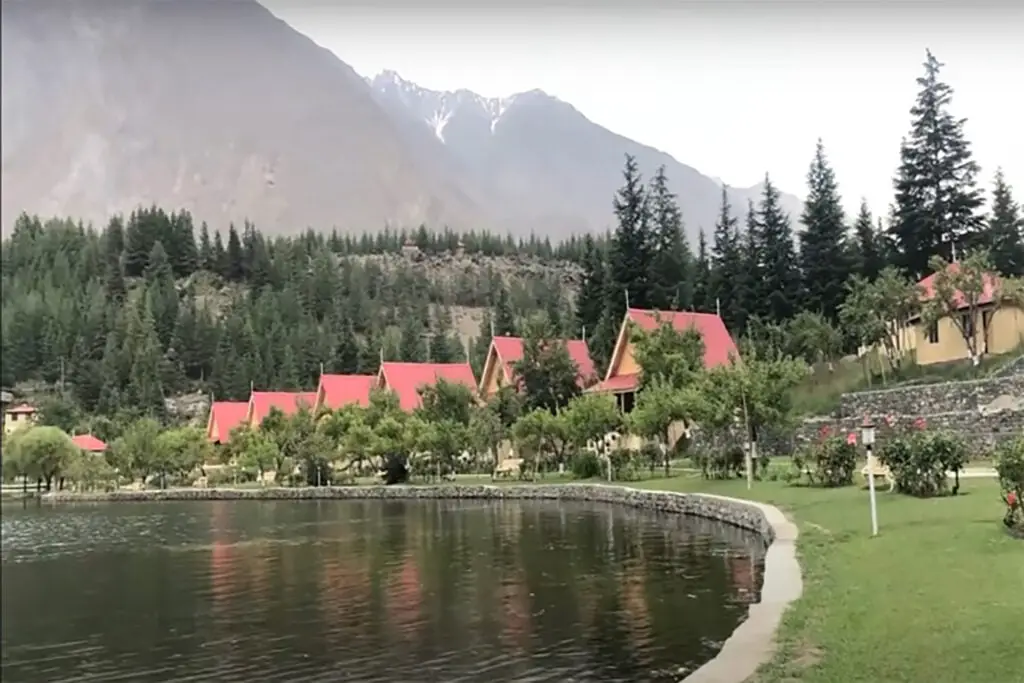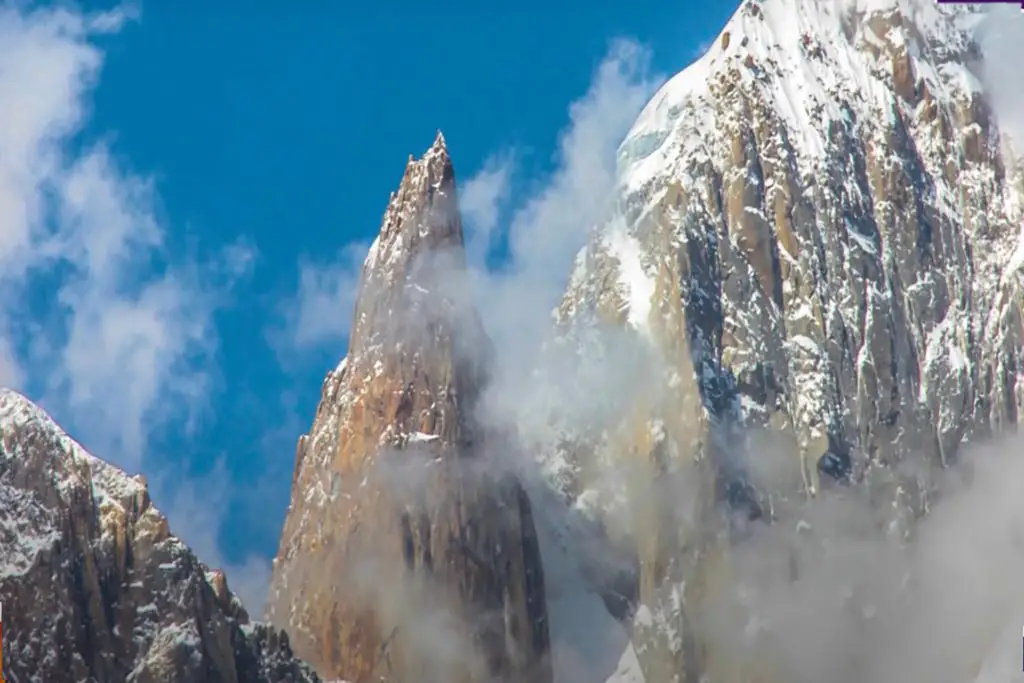Kapura Peak is a magnificent mountain peak located in the Nangma Valley of Gilgit Baltistan in Pakistan. This stunning peak stands at an elevation of 6544 meters and is a part of the Karakoram mountain range, which is home to some of the tallest peaks in the world. Kapura Peak is often considered one of the most challenging peaks to climb due to its technical difficulty and the harsh weather conditions in the region.
Early Summits to Kapura Peak Via Different Routes
In September 2013, two Portuguese climbers, Daniela Teixeira and Paulo Roxo, made the first ascent of Kapura South, a sister summit of the main Kapura Peak. Their route, Never Ending Dreams, is a 1300m line up the SW Ridge and includes difficulties up to M4 and 70° ice. This was the first route from the Nangma Valley, and the climbers’ success was a remarkable feat in the history of mountaineering.
The first ascent of Kapura’s main summit was made in 2004 by Doug Chabot, Steve House, Bruce Miller, Marko Prezelj, and Steve Swenson from the Charakusa side. This route is considered one of the most challenging climbs in the region due to its technical difficulty and unpredictable weather conditions. In 2009, Marek Holecek and Jan Doudlebsky added another route from the same side, called Wild Wings, which is a 1300m climb with difficulties up to WI5+ M7, 70°.
Kapura Peak is a paradise for rock climbers due to its challenging routes and breathtaking views of the surrounding peaks and valleys. The Nangma Valley, where Kapura Peak is located, is known for its stunning beauty and unique rock formations, making it a popular destination for adventure enthusiasts.
Climbing Kapura Peak
Climbing Kapura Peak is not for the faint-hearted, as it requires a high level of fitness, technical skill, and experience in mountaineering. The harsh weather conditions, including extreme cold, high winds, and frequent snowstorms, make climbing even more challenging.
Despite the challenges, climbers from all over the world come to test their skills on this majestic peak. Kapura Peak is a true testament to the spirit of human adventure and the pursuit of achieving the impossible. Its stunning beauty, technical difficulty, and unique location make it a popular destination for rock climbers and mountaineers from around the globe.
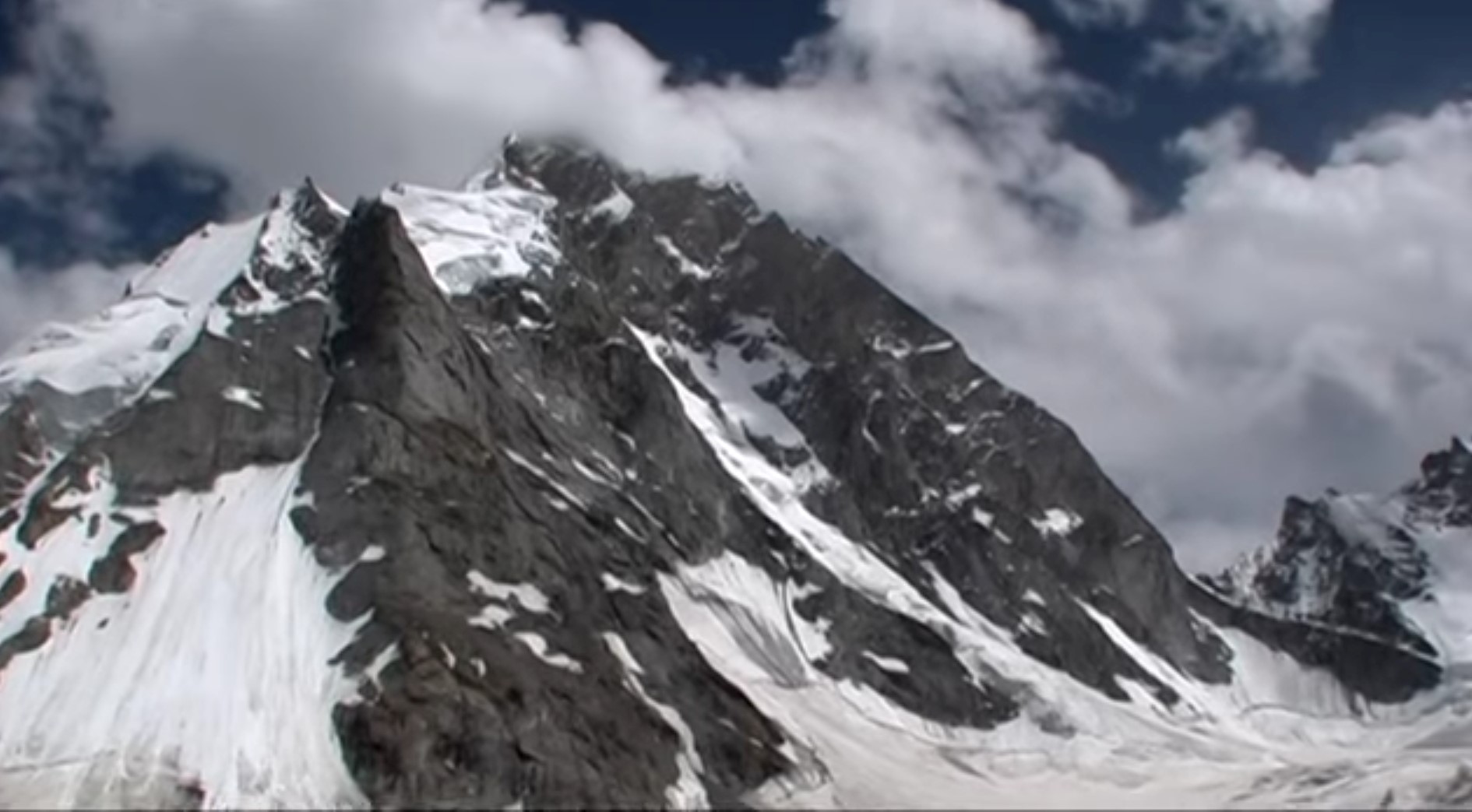
Climbing Kapura Peak is not only a physical and mental challenge, but it also requires careful planning and preparation. Climbers need to be well-equipped with proper gear, including ice axes, crampons, and ropes, to navigate the steep and icy terrain. They also need to acclimatize to the high altitude, which can cause altitude sickness and other health issues.
Despite the risks, climbers are drawn to Kapura Peak for the sense of accomplishment and the breathtaking views from the summit. From the top, climbers can witness the stunning panorama of the Karakoram range, including neighboring peaks such as Trango Towers, Masherbrum, and K2, the second-highest mountain in the world.
The Nangma Valley, where Kapura Peak is located, is a remote and isolated region, which adds to the adventure and mystique of the climb. The valley is only accessible by a challenging trek that takes several days and involves crossing high mountain passes and glacier crossings. Along the way, climbers can experience the unique culture and hospitality of the local Balti people, who have lived in the region for centuries.
In recent years, Kapura Peak has gained popularity among adventure seekers, and the region has seen an increase in tourism. However, it is essential to practice responsible tourism and respect the local environment and culture. Climbers and trekkers should follow the Leave No Trace principles and avoid leaving any garbage or waste behind.
In conclusion, Kapura Peak is a spectacular mountain peak that offers a challenging climb and breathtaking views of the Karakoram range. The first ascent of Kapura South by Daniela Teixeira and Paulo Roxo in 2013 was a remarkable achievement and a testament to the spirit of human adventure. Climbing Kapura Peak requires careful planning, technical skill, and experience in mountaineering, but the sense of accomplishment and the stunning views from the summit make it a destination worth pursuing for any experienced climber.

